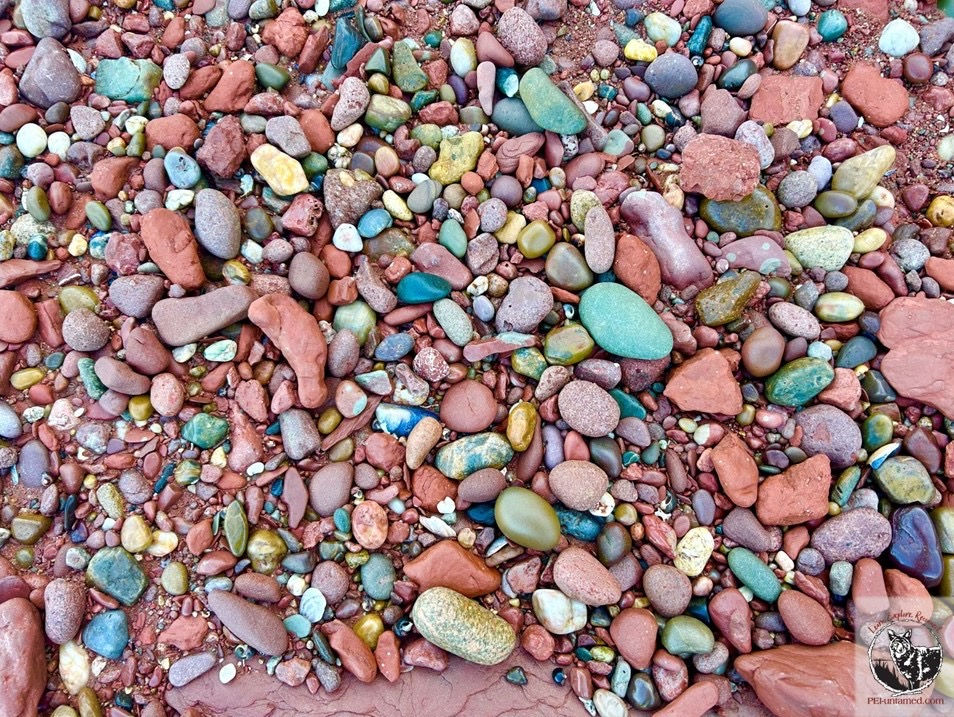Sandstone Oxidation
- katemacquarrie22
- Nov 15, 2023
- 2 min read
With the change of seasons, my plant and fungus posts are coming to an end and my two popular winter series – PEI natural history and wildlife tracks & sign – are returning, with new content. This annual transition is as gradual as the colour change on this sandstone, which caught my eye as a beautiful illustration of oxidation (Photo 1).

You likely know that PEI’s soil is red due to iron oxide – rust. But have you ever thought about what our rocks and soil would look like if they hadn’t oxidized? They’d be the green-grey colour seen on the upper left side of this rock.
The Island’s bedrock was formed from iron-rich sediments deposited in the Permian, some 250 to 300 million years ago. When that iron is exposed to air it oxidizes, resulting in the distinctive rusty red colour of Island clay. But when sediment was deposited during wet periods, water prevented air from contacting the iron and it didn’t oxidize. Organic matter mixed with sediment can further prevent oxidation (organic material both uses up oxygen as it decays, and changes and slows some of the chemical pathways of the oxidation reaction).

Sandstone oxidation is a gradual process that happens over tens of millions of years. You can imagine this rock under an ancient river or lake, or otherwise buried and protected from the air. As conditions changed and it became exposed, oxidation slowly began. Another example is the unoxidized layer in Photo 2, recording a prehistoric time when that area was under an ancient lake.

Sometimes the iron didn’t get a chance to oxidize, but sometimes the oxidation was reversed (a process called reduction). If you ever found a perfectly round grey or greenish spot on a piece of PEI’s red sandstone, you found a reduction spheroid (Photo 3)!
Certain metals (such as uranium, vanadium, copper, cobalt, and silver for example) can take the oxygen away from the iron in the rock. At the centre of each of these circles (spheroids) is a tiny bit of metal or mineral. Over many tens of millions of years, it reduces the surrounding sandstone, turning it back to its original, unoxidized colour and leaving a tell-tale circle.
The Island’s iconic sandstone cliffs tell us much about the prehistoric environment in which they were formed, and I’ll give you some more examples in a future post. In the meantime, imagine how our landscape would look if the rocks and soil were green-grey rather than their now-famous red. It would be an entirely different PEI untamed!



